In 2014, Clay Bolt, a self-described natural history photographer, started photographing bees in his Bozeman, Montana, garden after reading about colony collapse disorder, the phenomenon devastating honey bee populations around the world. Curious about what he’d captured, he found the bees in his photos weren’t honey bees, which are native to Europe, but rather two different species of native North American bees. In North America alone, Bolt was surprised to learn, there are more than 4,000 native bee species.
“As I began to do more research, I realized that so little was known about our native species, and so at that moment I realized that I could use my photography to begin to tell some of those stories,” he said.
Ever since, Bolt has been photographing native North American bee species for his project, “Beautiful Bees.” He hasn’t counted how many species he’s photographed, but every time he goes out into the field, he said, he encounters a new one.
“There is so much to learn. Because of the incredible number of species, they’ve all evolved to fill different niches within the ecosystem. For example, some bees fly in the spring, some in late summer, some fly just before the sun rises, some even fly at night! There are squash specialists, leafcutter bees, bees that dig nests in the ground, and others that nest in hollow twigs. Everywhere you look, different species of bees are making a living and doing it well,” he said.
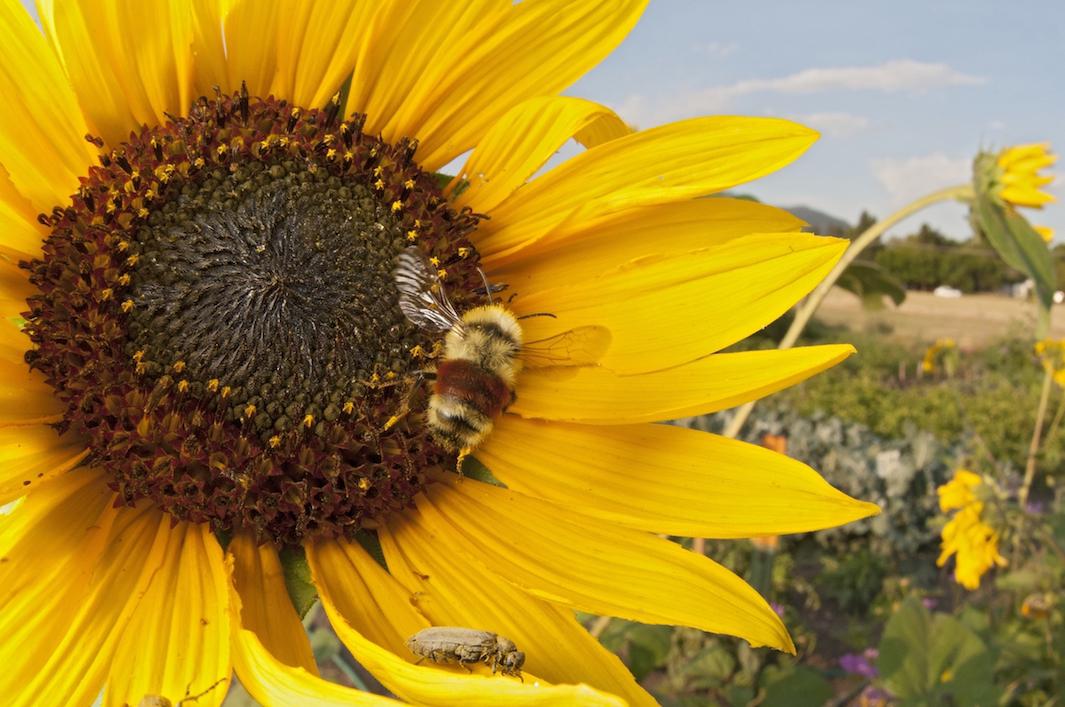
Copyright Clay Bolt

Copyright Clay Bolt

Copyright Clay Bolt
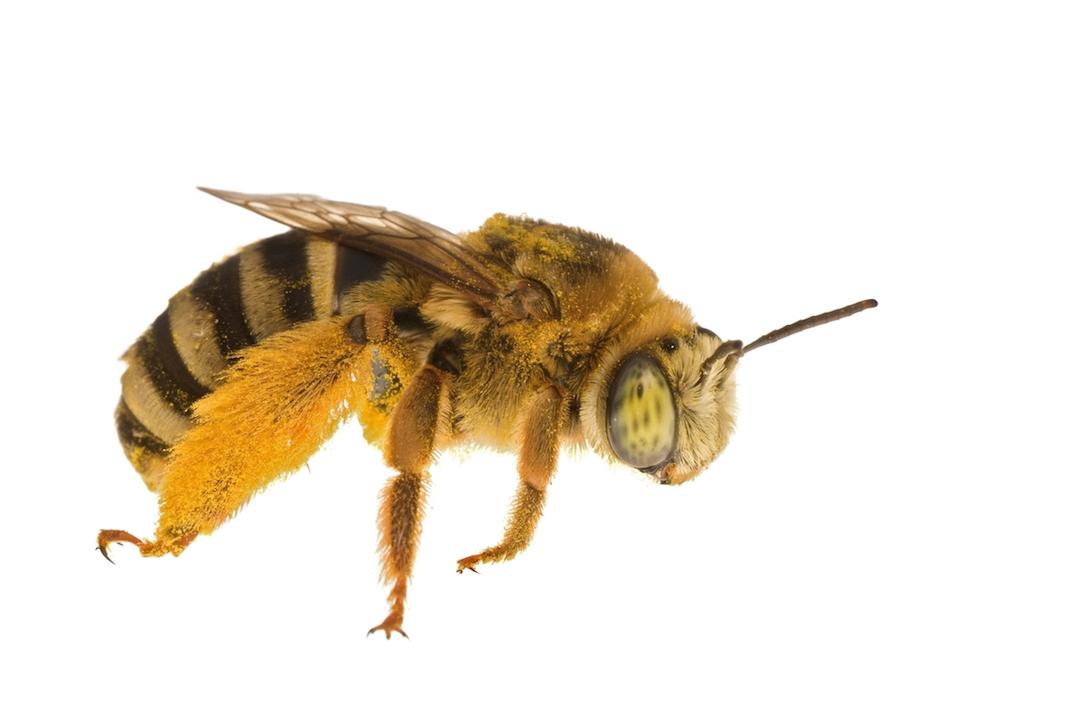
Copyright Clay Bolt
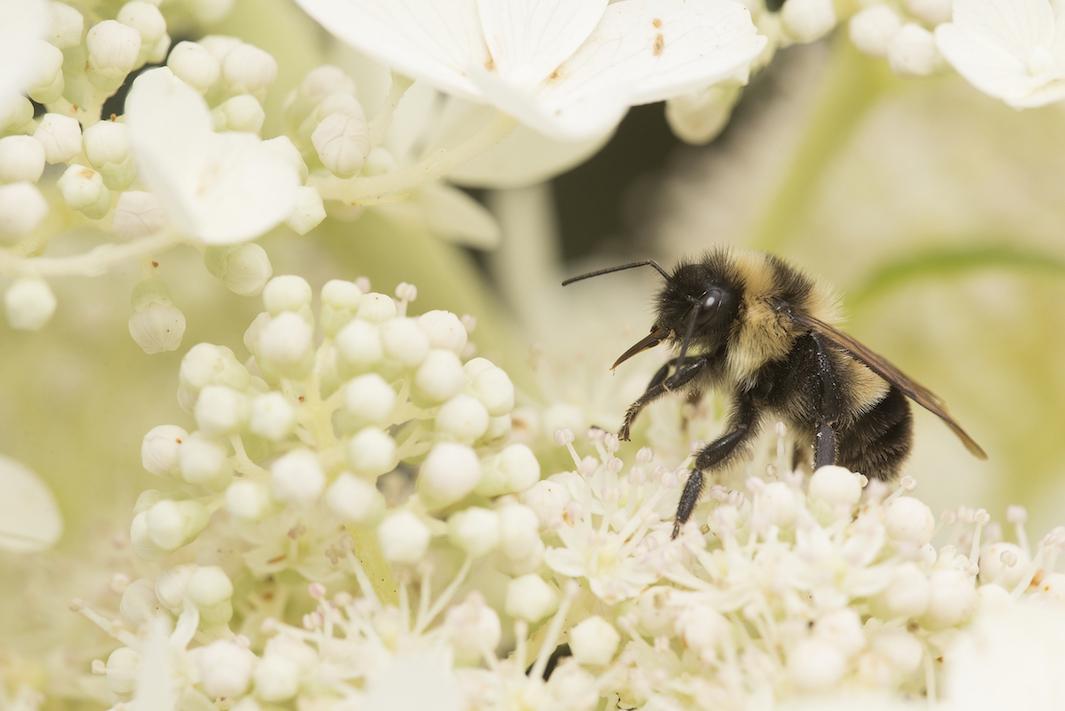
Copyright Clay Bolt

Copyright Clay Bolt
Bolt makes all of his photographs in the field, and he never chills or sedates bees to get his shots. After netting a bee in the wild, he transfers it to a plastic dome on top of a table illuminated from below with a flash and from above with a fill-flash. The bees usually fly around under the dome for a few seconds, and when they stop to clean their wings, Bolt lifts the edge of the dome to make his photograph. He also photographs bees in their natural environments, which requires standing still by flowers during the hottest parts of the day.
While they’re not suffering from colony collapse disorder, many native North American bees are still threatened. According to Bolt, 1 in 4 native North American bee species are facing extinction, yet none are protected under the Endangered Species Act. One, the rusty-patched bumble bee, used to be one of the most common bumble bees in North America, but over the past 15 years its numbers have declined 87 percent. For the past year, Bolt has been working with the Xerces Society to push for the bee’s listing. He also recently produced a film with Day’s Edge Productions to spread the world about what’s happening to the rusty-patched bumble bee and what can be done to protect it.
People can help keep local bee populations healthy, Bolt said, by refraining from using pesticides and by planting native plants from their regions in their gardens, which provide bees with a varied diet year-around. But getting people to do that starts with educating them and making them passionate about bees, a mission in which Bolt hopes his photos play a part.
“I want [viewers] to feel wonder and excitement at how beautiful these important creatures are. And even better, I want them to pay closer attention the next time they are in their own garden or backyard. Many of my subjects are smaller than a grain of rice, but if you look closely, even with the naked eye, you can see how marvelous they are,” he said.

A Halictus sweat bee, Halictus poeyi, prepares to land on an Aster next to a metallic green bee, Agapostemon splendens, South Carolina.
Copyright Clay Bolt
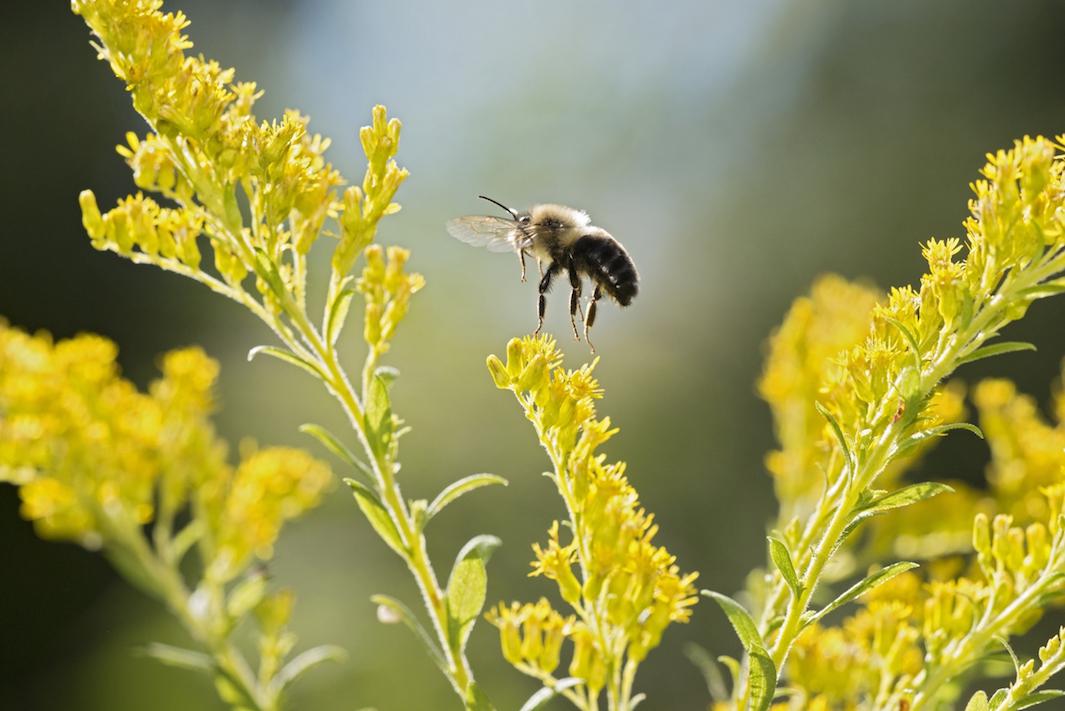
Copyright Clay Bolt

Copyright Clay Bolt
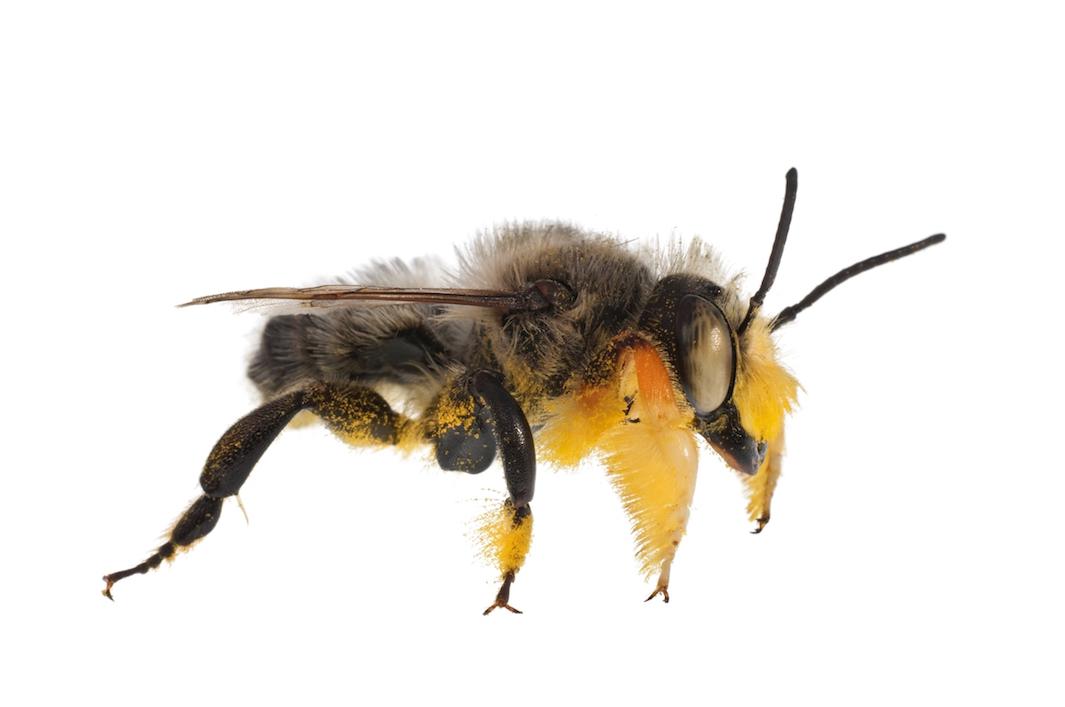
Copyright Clay Bolt
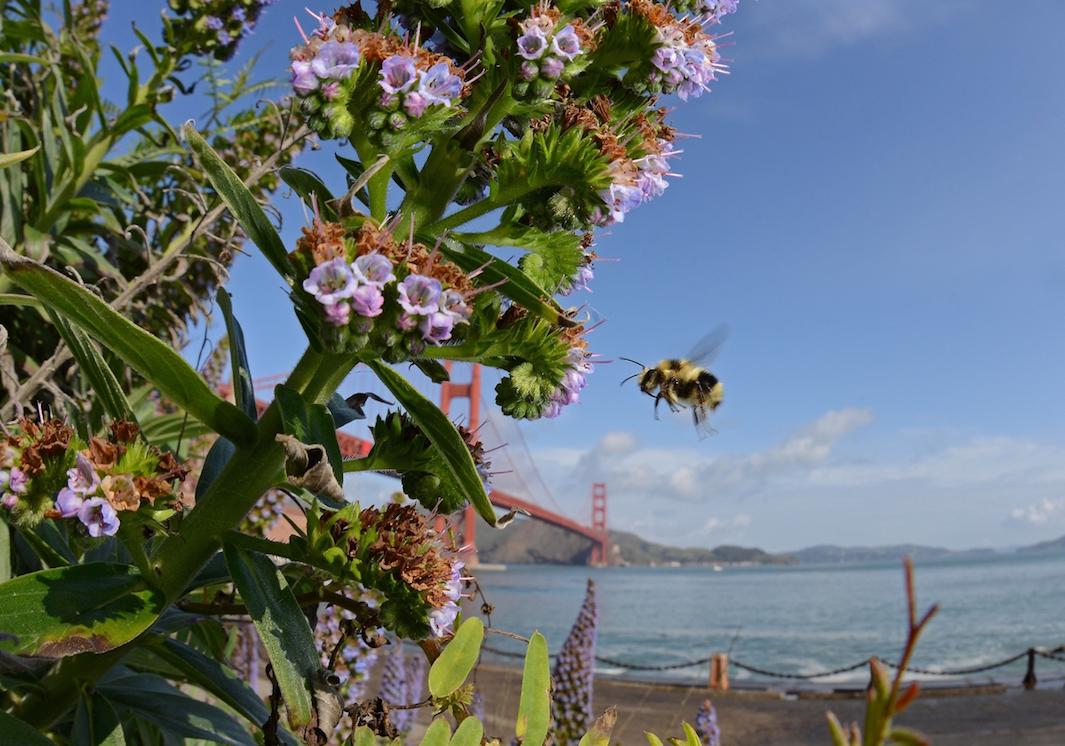
A black-tailed bumble bee, Bombus melanopygus, flies in front of the Golden Gate Bridge.
Copyright Clay Bolt
Correction, May 2, 2016: A photo caption originally misstated that mason bees prefer mock orange flowers for foraging. The Chelostoma philadelphi bee, a type of mason bee, prefers this type of flower.
